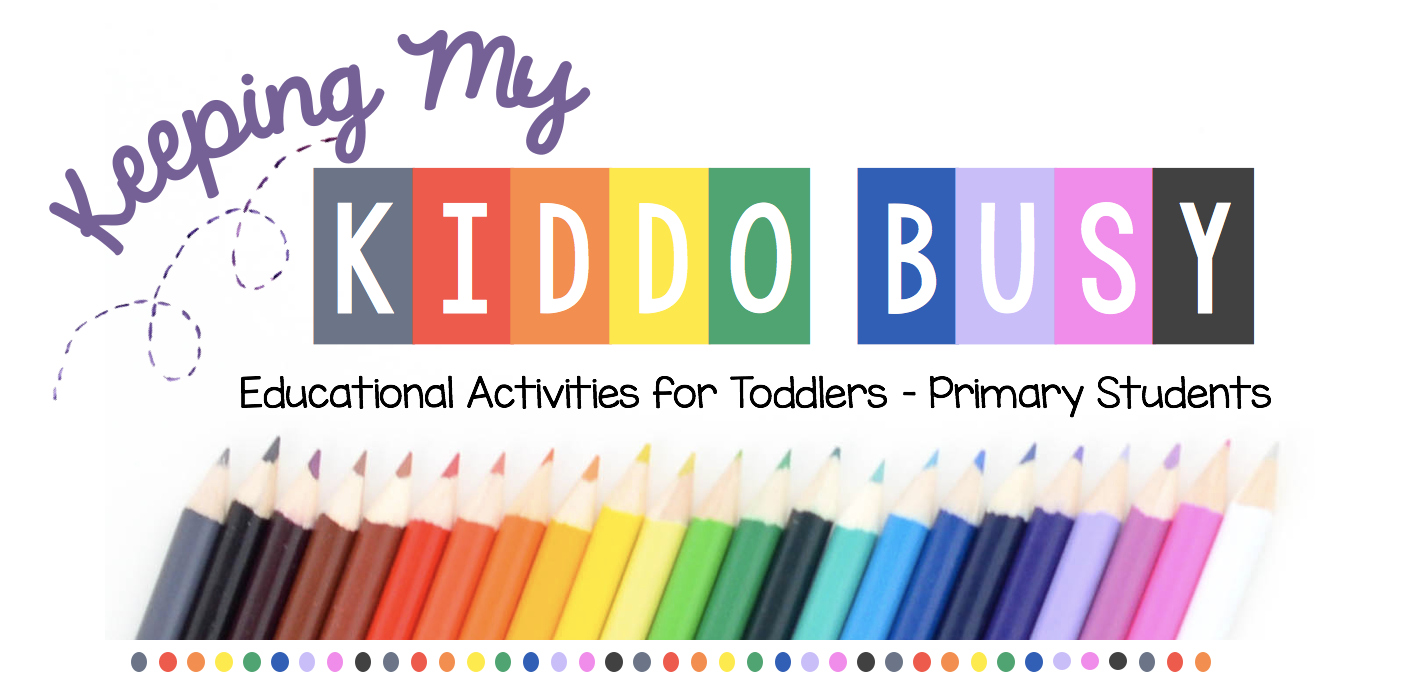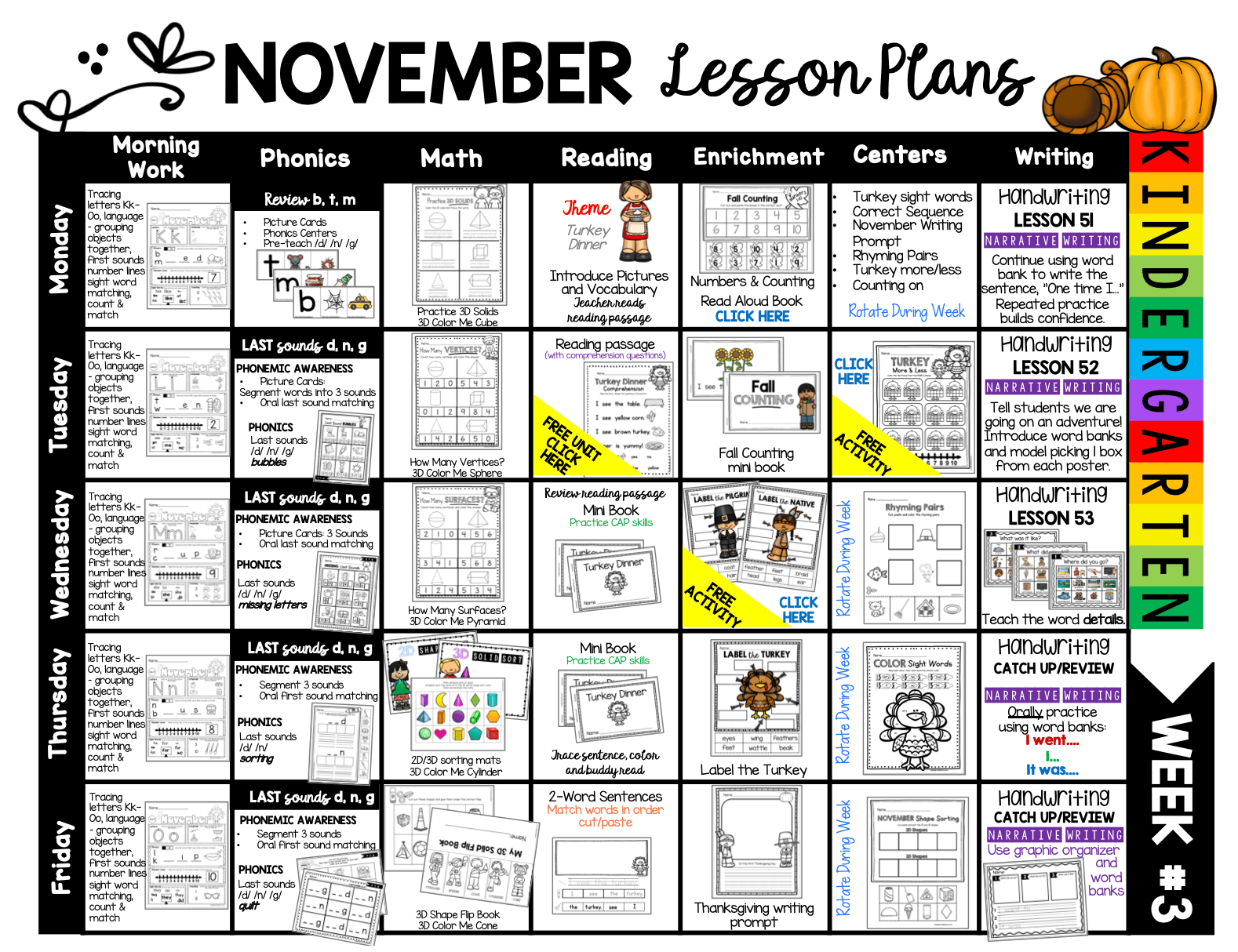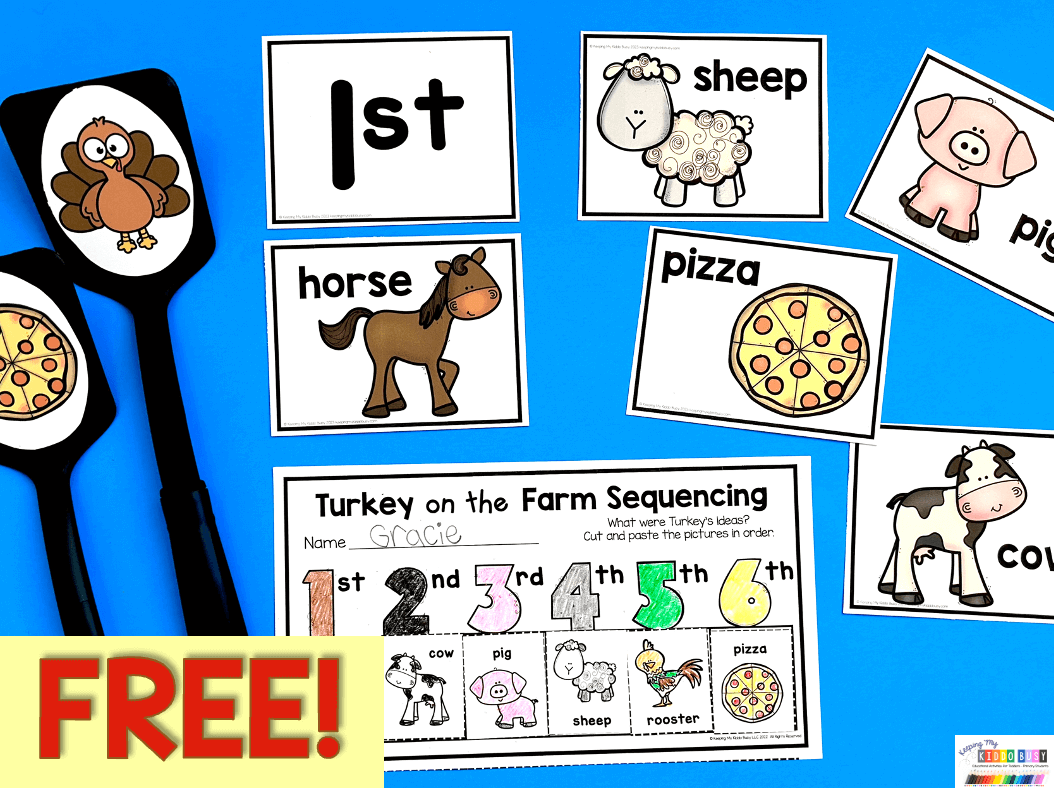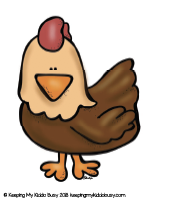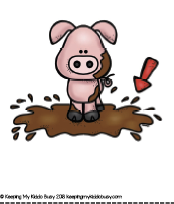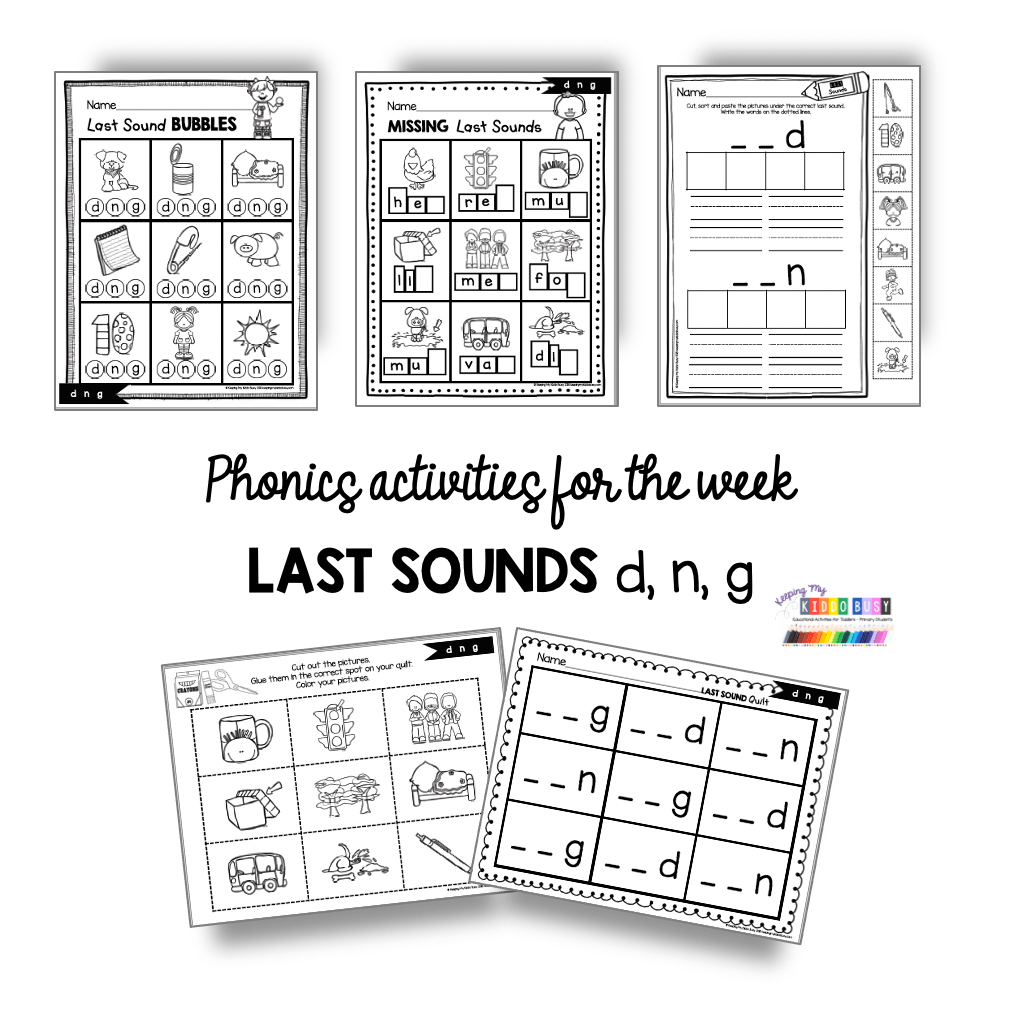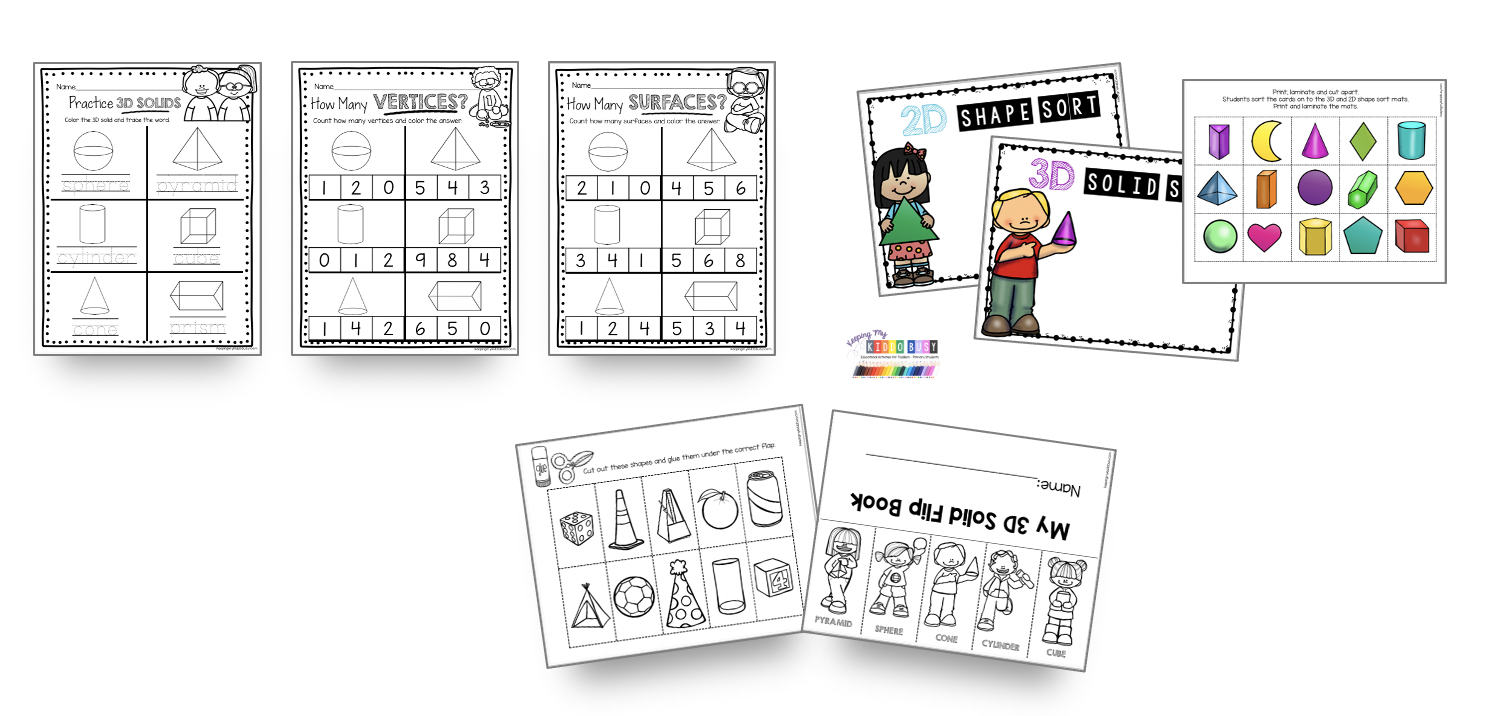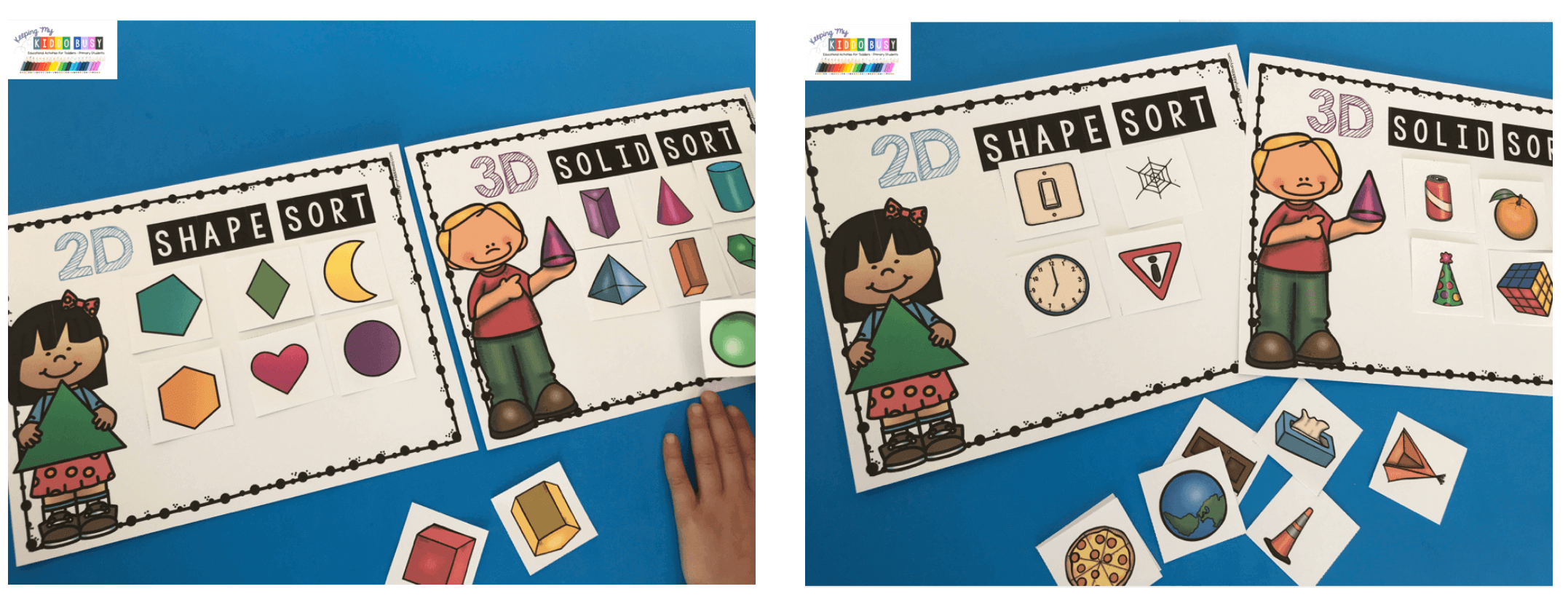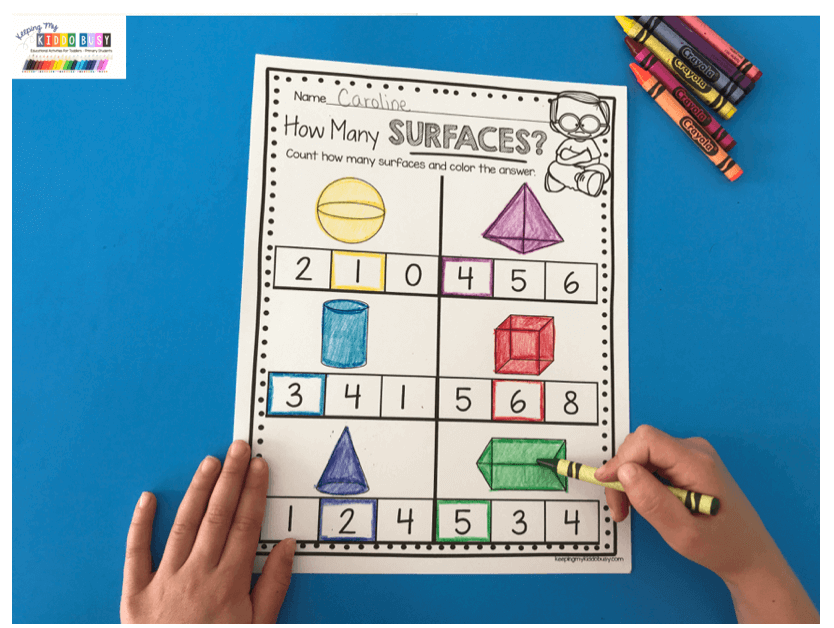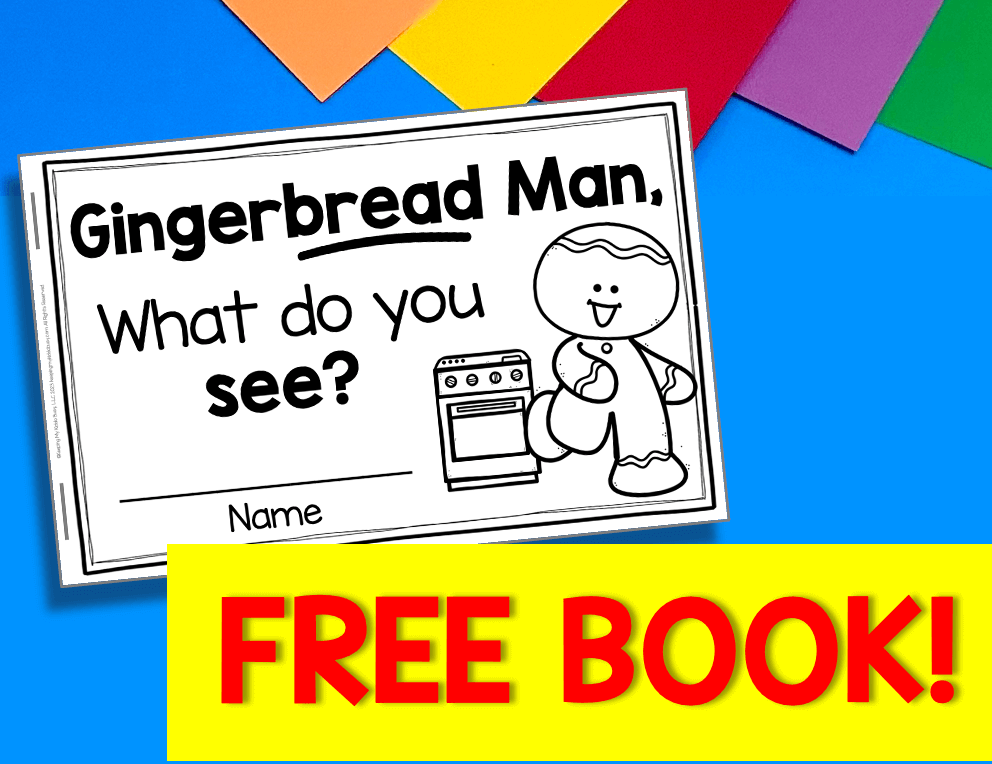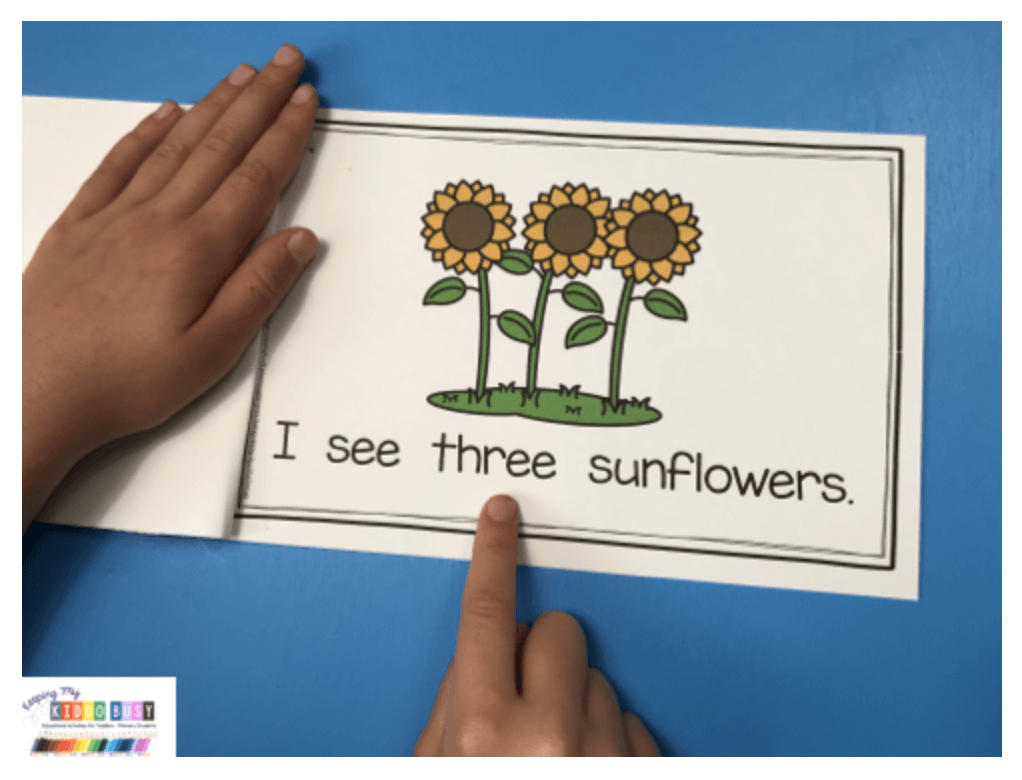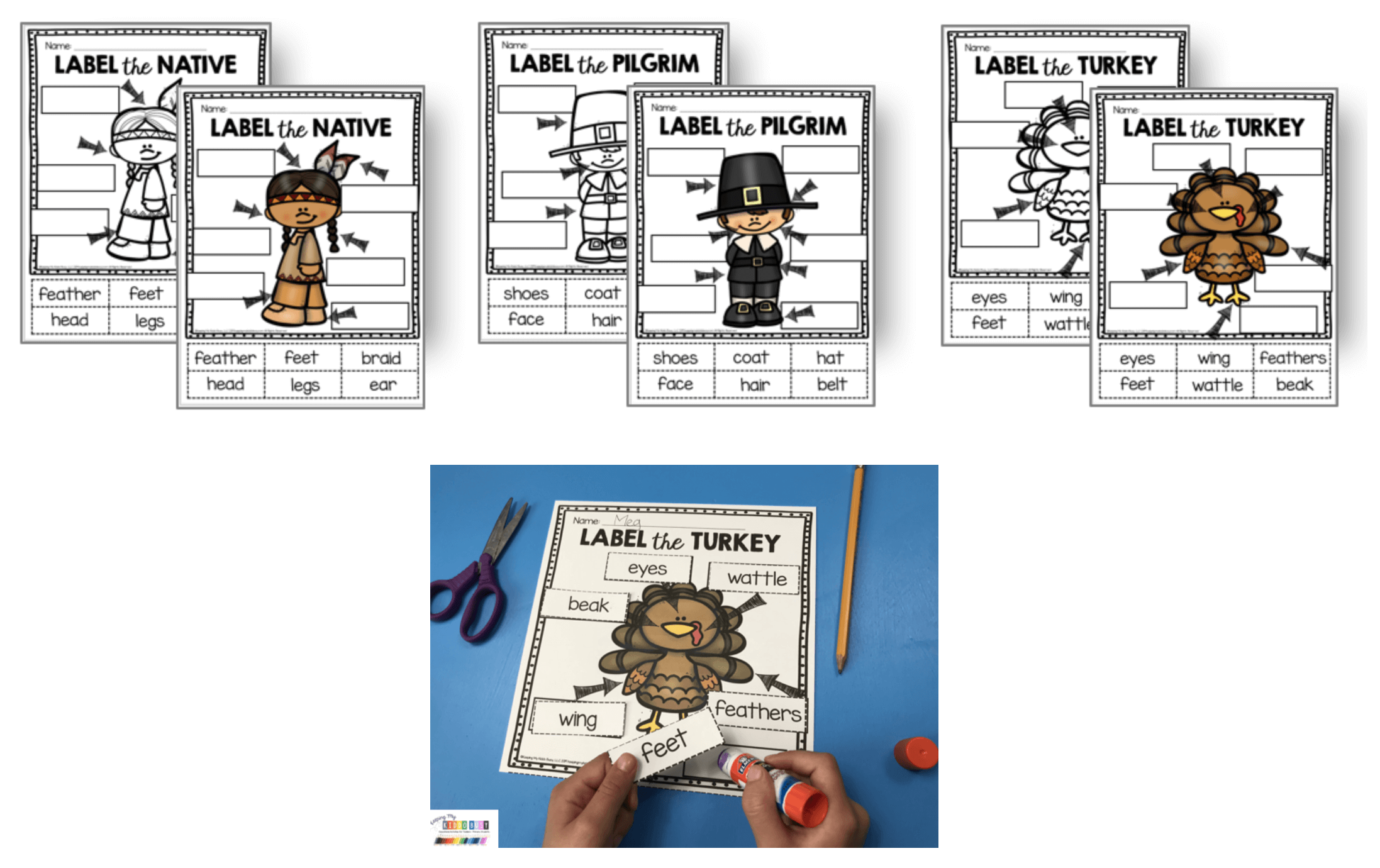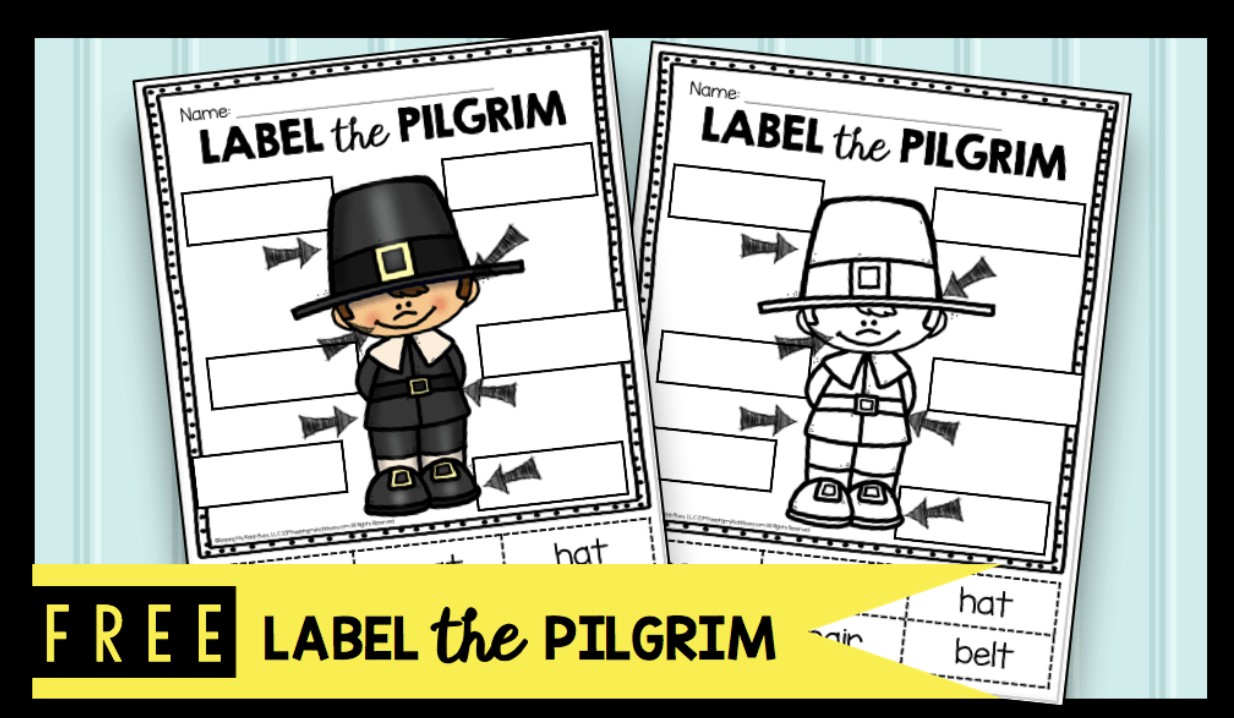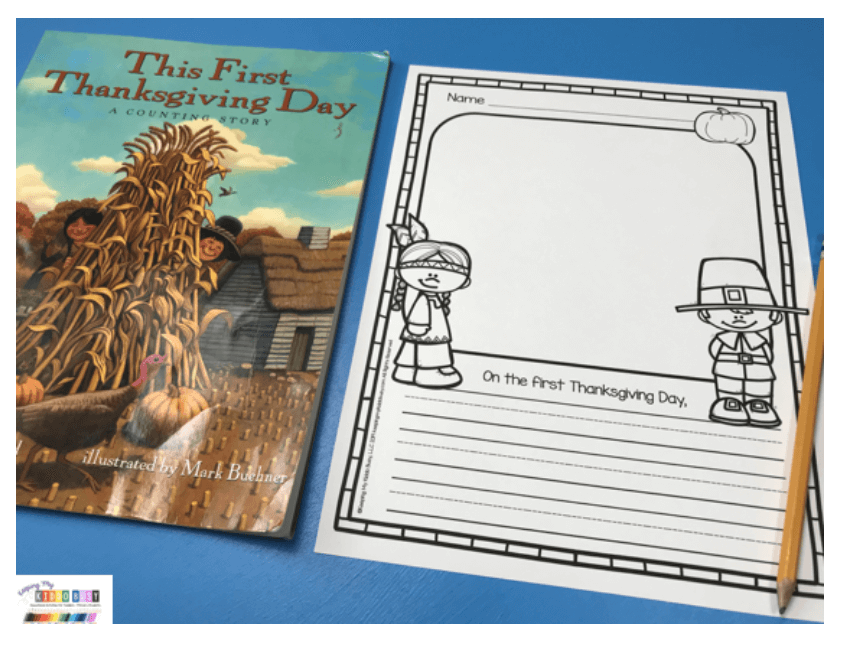Week 3 in November - FREE Lesson Plans
Happy third week in November!
How are your lessons going? Are you in a groove with your sweet kiddos?
Whether you’re teaching in the classroom, via virtual learning or homeschooling, I hope you’re feeling good about the progress your kids are making.
Did you miss my weekly blog post last week? CLICK HERE
At the bottom of this blog post, there’s a link to see what we are doing next week too!
If you’re new here, welcome! I share my lesson plans for free HERE and there are so many freebies this week including an entire week of free guided reading activities.
I think I love November so much because everything is just clicking with my kids right now.
We are segmenting and blending CVC words, they are beginning to really understand what a sentence is (and many can write one!) and most of my children have a strong understanding of 1:1 correspondence and numerals 1-10.
This month we have been diving deep into geometry, and it is so much fun!
This page contains affiliate links. Read Full Disclosure
12 DAYS OF CHRISTMAS
Before we get started on lesson planning for the week, I have to share this super cute blog post about the 12 days of Christmas.
Before we homeschooled, I loved spoiling my children’s amazing teachers with 12 little gifts to help them get through the crazy month of December.
I have free cards you can print and an editable version - CLICK HERE
Let’s get started with Week 3 of November!
I created my Disguise a Turkey Unit in 2023, and it correlates perfect with one of our favorite November read aloud books… Turkey Trouble.
It is not too late to get started with these adorable activities!
I use their excitement and engagement to teach our key standards with this unit:
Math
Reading comprehension & fluency
Writing
…. and so much more for the entire month of November!
You can read my blog post and print the FREE retelling activities, or purchase the entire unit HERE in my shop.
Calendar and Morning Meeting
Starting your day with calendar time and thoughtful morning meetings are a complete game changer.
Just this year, I created these adorable digital calendar sets that target the exact skills we are working on in November.
The kiddos are SO engaged!
Sing-along songs and moveable pieces are even embedded on the slides for you.
CLICK HERE to see a video of my November calendar.
CLICK HERE to see all of my digital calendars.
Independent Morning Seat Work
These daily worksheets target the exact skills my students are learning, but can also be independent with.
If you already using my morning work, then you know that students can mostly be independent with these worksheets.
November morning work covers:
Phonemic awareness
Letter names and sounds
Segmenting CVC words
Counting and 1:1 correspondence
Using a number line for numbers 1-10
Sight words
Try it yourself and print a FREE WEEK from every month HERE
Each month also now is compatible with Google Slides and FREE Spanish versions are included for your bilingual children.
PHONICS
I love teaching last sounds in CVC words!
Teaching first sounds and introducing phonemic awareness in general is exhausting, but now that most know all their letter sounds we just click right along.
I shared last week that one of my best tools to use for teaching segmenting and blending CVC words is using elkonin boxes.
If your kids need help with first sounds still, use THIS unit.
Have you been using Elkonin Boxes?
I warm up with them every day. I like to use the I do, We do, You do teaching method.
I model a word, we then do it together and then I ask them to do it.
Once they have the hang of it, they can segment and identify individual phonemes (sounds) by themselves.
In the phonics last sound unit, you’ll see these picture pages.
Cut out the elkonin boxes and laminate if you prefer.
I use these boxes all the time, and they are amazing for visual learners (I am a visual learner too!)
Here is an example from the sounds we are focusing on this week: /d/ /n/ /g/
I use elkonin boxes in both our whole group warm up and in our small groups.
Some children will need their own set and I literally pick up their finger and touch each box as we say the sounds together.
If you have a student struggling with segmenting and blending CVC words, this will help them so much.
My own daughter caught on so quick and she can segment CVC words fluently now.
I also like to have students match last sounds. This builds their phonemic awareness.
For example, I will show them these three pictures:
I say each word, we segment all three and then I point to the last elkonin box and say, “Which two have the same last sound?”
Answer: hen and fan
Since this is a phonemic awareness activity, you don’t even have to talk about letters or write letters.
We are practicing segmenting and blending orally and are focusing on just the sounds.
You can choose to use the letters if you wish, and often times I do this at the end.
Below is a video of me using the Elkonin Boxes to segment CVC words (this video was from when we were working on first sounds.)
Now that we are studying last sounds, I just focus on the last square.
Below is a great video on another way to use elkonin boxes (this is not my class).
This teacher does it slightly different than me, but the idea is that each box represents one phoneme.
Also, I should note - she also uses words that are not CVC words, but the words she uses do still have three sounds.
For example: sheep - /sh/ /ee/ /p/
After our phonemic awareness activities (this is building their foundation), we incorporate letters using the worksheets and activities.
To then focus on phonics, or incorporating letters, these are the activities we use this week:
d, n, g
For more information on how I teach phonics, please visit my phonics homepage HERE
MATH THIS WEEK: GEOMETRY
We started geometry at the beginning of November, and it has been so much fun!
Teaching geometry is so much more than having children memorize the name of shapes.
It is really about spatial reasoning, problem solving and recognizing patterns.
It is easy to spend the least amount of time on this math unit, but research suggests that these skills of understanding:
symmetry
perspective
mental rotation
use of scale
and basic navigation skills…
are incredibly important for a strong foundation in math and problem solving skills!
Here are some of the activities we are doing this week:
I want children to be able to recognize and name the basic shapes, as well as being to recognize them in the world around us.
This week we are diving more into 3D shapes!
I mix it up between hands-on manipulatives, activities and worksheets.
These activities can be used in small groups, whole group and rotating centers.
What I love about them is that we play them many times throughout the unit.
Read my full blog post about geometry HERE to learn more.
Geometry is more important than you may think for teaching schildren important math skills.
Read last week’s blog post about geometry and I explain more.
READING: Print my ENTIRE FREE WEEK of materials!
I love my guided reading time!
I do this in small groups, and this is truly where the magic happens with fluency and comprehension.
You can give 1:1 attention, move quickly or slowly and really “move” kids in small groups.
I would teach in small groups all day if I could.
It is so easy to keep them engaged and make connections with each child.
How to run small guided reading groups:
Start with sight words!
Warm up by reviewing sight word flash cards and then read two sight word fluency pages that we are working on.
If you have five kids in each small group, just make five fluency passage folders.
I just slip each passage into a page protector and this makes it so quick and easy to read each day.
I use these three pronged folders and page protectors.
You can do the same thing with your monthly themed guided reading fluency passages as well.
We follow the same routine each week with guided reading using the same three materials:
fluency and comprehension passage
mini reader
writing and sentence builder
The theme changes and the difficulty increases each week, but the routine stays the same.
I love that my kids are in a routine and it saves me so much energy not having to explain what to do.
All of our precious instructional time is spent on learning with this routine!
CLICK HERE TO PRINT THIS FREE WEEK!
I outline my guided reading routine HERE on our rock star reader homepage.
Learn about the Science of Reading HERE
I’ll send you a link to my FREE RESOURCE library!
If you love freebies, join over 300,000 teachers and homeschool mamas who are part of our KMKB community.
You can print this adorable Gingerbread Man freebie right away!
If you already joined my email list, CLICK HERE to enter.
ALL ABOUT FALL - WEEK 3
I love thematic teaching, and this is the third week of all about fall.
This is how I incorporate our favorite read aloud books, reading, writing, art, science and social studies.
This week we are getting ready for Thanksgiving.
This is such a cute book to get students ready for Thanksgiving!
The story rhymes and teaches children about how Thanksgiving started, and it also lends itself perfectly to practicing numbers 1-12.
Students are always really engaged with this story!
Each page switches from showing what the pilgrims did to the next page showing what natives did.
We practice counting the people on each page to make sure it matches with the number.
Students love this!
This book also lends itself really well to comparing and contrasting.
We then make our own numbers and counting book with all things fall!
They turn out so cute and students love to color them and bring them home to read to their families.
Next we practice labeling!
If you’re new to labeling… I use this skill in a literacy center for the entire school year.
We learned these vocabulary words with the story, so now we get to practice labeling.
All three versions come in both color and black and white.
The color works great in a center and the black and white work well for a cut and paste activity.
CLICK HERE TO PRINT THIS FREEBIE
CLICK HERE TO VISIT THE BLOG AND LEARN MORE ABOUT THIS UNIT
For our writing prompt this week, students can write one thing they learned from the story.
At this point in the year, many of my kiddos tell me what they want their sentence to say, and I write it in highlighter.
This way students can be successful and they simply can trace it.
CLICK HERE to read my full blog post about my thematic unit: All About Fall and see all four weeks!
CLICK HERE to visit my Thematic Teaching Homepage: Apples, Friendship, Winter, Community Helpers… and more!
November NO PREP Math & Literacy Activities
I use these activities as my math and literacy centers in my classroom.
I ditched all the cute centers that took a ton of ink and lamination, and instead I just “print and teach” with these activities.
They are perfect for sub tubs or for fast finishers too!







These printables are so versatile!
These are the ones I plan on using this week (shown below.)
CLICK HERE for this FREE mini book!
CLICK HERE to visit my no prep blog post and print 3 MORE freebies!
We are having fun with Narrative Writing!
This is so exciting, because we are starting to learn how to write complete sentences.
It is truly not overwhelming if you provide students with structure, support and scaffolding.
I always being by using sentence starters. Students use have to fill in the last word in their mini book.
Last week, we started with our mini book and sentence starters.
We also continue with the word banks I introduced last week.
If your students are strugling, continue modeling for them. You can write their thoughts in highlighter and they can trace as well.
I want my students to feel confident - so meet students where they are at.
My oldest is a natural writer and was above average in kindergarten.
My second daughter struggles with writing, so I had to take a break and come back.
Do your best to meet children where they are at.
I want them to formulate thoughts and see their ideas written down.
Repeat, repeat, repeat.
Doing the same activity, in the same format over and over again this will build their confidence.
When they are ready, move on to writing three sentences (with picture word banks and a graphic organizer with sentence starters.)
These are so fun to complete with students and provide the exact support they need to begin writing a narrative piece.
The different combinations and possibilities students can write about are endless.
They simply choose one box from each poster and then complete the coordinating recording sheet.
Students get to choose:
Where did you go?
What did you do?
What was it like?
This is the perfect way to scaffold students and provide the support they need to complete their first narrative writing pieces.
I do these activities using direct instruction in small groups first.
We walk through the expectations and then I show them how I would complete the activity.
Then we do a narrative piece together, and finally they complete one writing piece with me observing.
I created this program last spring when schools went remote for virtual learning. It makes it so easy for parents to see what students need to work on each day.
It brings consistent, standards-based activities that students feel confident completing each day.
In the classroom, these make perfect daily warm ups for language arts and math time.
They also can be used for a daily end of the day review.
I use them at home with my daughter each day - I just copy the math and language arts page back to back each day for her.
I love how she can be almost totally independent with them!
NOVEMBER BOOM CARDS
Perfect for whole group instruction, small groups, intervention, independent centers, homeschooling virtual learning and more!
Your kids will love using these decks to practice the exact skills we are working on right now.
I love that they get instant feedback since they are self correcting. You can try the first five cards in each deck for free!
